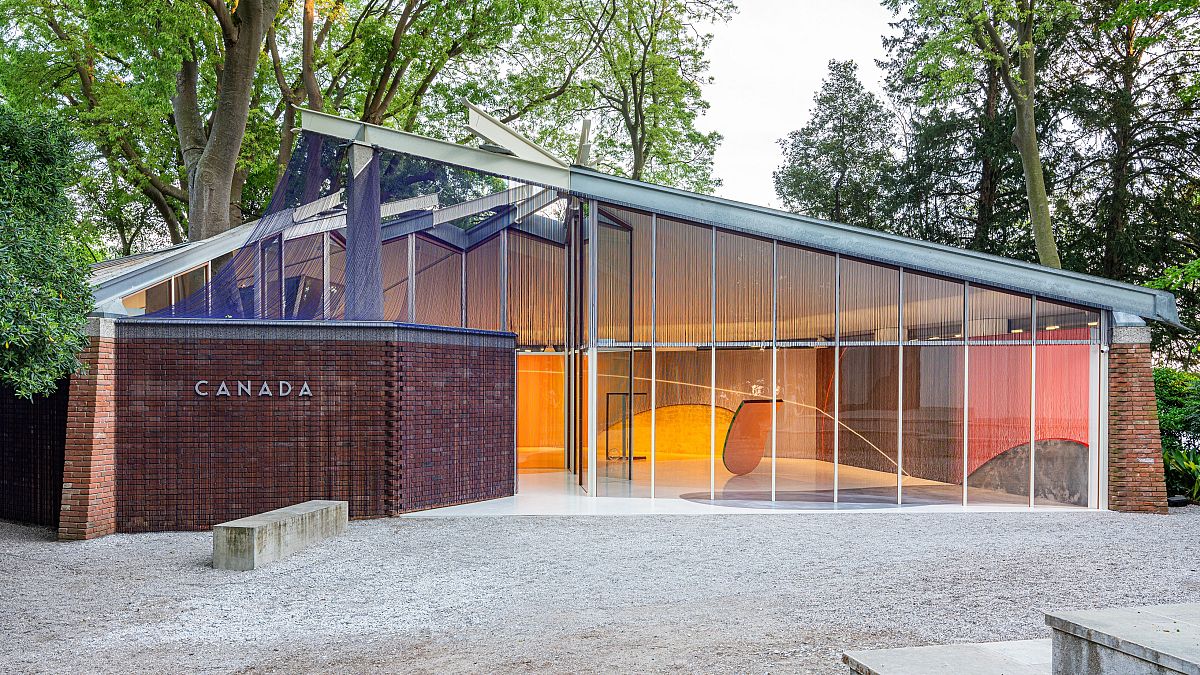Perline di conteria, or seed beads, were produced in Murano from the 15th century and became a coveted currency for Venice’s global trade in the centuries that followed. Artist Kapwani Kiwanga explores their pivotal role in history and their “complex legacy". The exterior of the Canada pavilion at the is draped with hundreds of blue-beaded strings suspended from the roof lintels and cascading down the brickwork walls.
Inside are thousands more in sunset hues veiling the pavilion interior. The strings are threaded with minute seed beads - tiny objects that carry a weighty history. Artist Kapwani Kiwanga explores the pivotal role of these Murano-made glass beads in the history of global trade and their “complex legacy”.

But for an installation set in Venice, there is surprisingly little acknowledgement of the significance of seed beads in the city’s own economic, social and artistic history. Indeed, the art of glass beads has been designated as intangible heritage. For those who fought to have Murano’s glass beads recognised as such, the failure to mention this in the pavilion’s information boards is a glaring omission.
, or seed beads, were produced in Murano from the 15th century and became a coveted currency for Venice’s global trade in the centuries that followed. In , Kiwanga delves into the bartering power of the beads, exchanged for gold, bronze, palm oil and enslaved people in Africa and the Americas. With the backdrop of the bead fringe, four sculptures.























